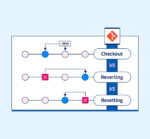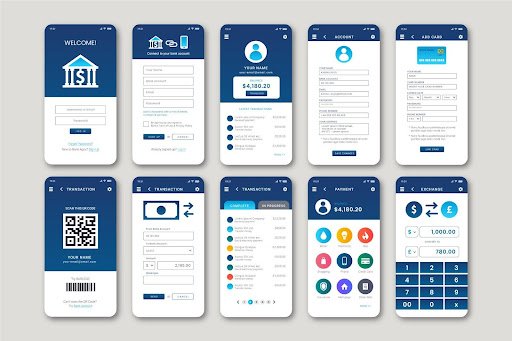Introduction
If you’re searching for a React to-do app tutorial, this step-by-step guide is the perfect place to start. You’ll learn how to build a to-do app in React while mastering essential concepts such as components, states, props, JSX, and event handling. This hands-on project helps you practice React in a real-world context, giving you both confidence and practical experience.
The React to-do list app with source code is simple yet highly effective—it demonstrates core functionality while remaining easy to implement. Along with the tutorial, we’ve provided a GitHub repository so you can download, clone, and customize the app for your own projects.
Whether you’re a complete beginner taking your first steps in React or revisiting the basics to strengthen your skills, building a to-do app is the best way to sharpen your frontend development knowledge and create something functional from the ground up.
What You’ll Learn about to-do app
- Project structure best practices
- Creation and organize React components:
- Using useState() handle manage state
- Using forms input user handling
- Rendering list dynamic
- Create, remove, mark complete task
Tools & Prerequisites
Before you start, ensure you have:
- Node.js and npm are installed
- Code editor like VS Code
- Basic knowledge in Javascript and React

Step-by-Step: Build a To-Do App in React
Step 1: Create the React Project
npx create-react-app react-todo-app
cd react-todo-app
npm start
This creates a boilerplate React project. You can rename it as needed.
Step 2: Structure Your Components
Let’s create three components:
/src
|– App.js
|– TodoList.js
|– TodoItem.js
|– AddTodo.js
This will keep your React to-do list app with source code organized and modular.
Step 3: Create App.js
import React, {useState} from ‘react’;
function AddTodo({ addTodo }) {
const [text, setText] = useState(”);
const handleSubmit = (e) => {
e.preventDefault();
if (text.trim()) {
addTodo(text);
setText(”);
}
}
};
return (
<form onSubmit={handleSubmit}>
<input
type=”text”
value={text}
onChange={(e) => setText(e.target.value)}
placeholder=”Add a task”
/>
<button type=”submit”>Add</button>
</form>
);
}
export default AddTodo;
Step 4: Add AddTodo.js
import React, (useState} from ‘react’;
function AddTodo (addTodo }) {
const [text, setText] = useState(”);
const handleSubmit (e) => {
e.preventDefault();
if (text.trim()) {
addTodo (text);
setText(”);
}
}
};
return (
);
<form onSubmit=(handleSubmit]>
<input
/>
type=”text”
value (text)
onChange=((e) => setText(e.target.value))
placeholder=”Add a task”
<button type=”submit”>Add</button>
</form>
export default AddTodo;
Step 5: Add TodoList.js
import React from ‘react’;
import Todoltem from ‘./TodoItem’;
function TodoList({ todos, deleteTodo, toggleComplete }) {
}
return (
);
<ul>
(todos.map(todo
<TodoItem
/>
))}
</ul>
key (todo.id)
todo (todo)
(
deleteTodo (deleteTodo)
toggleComplete={toggleComplete)
export default TodoList;
Step 6: Add TodoItem.js
import React from ‘react’;
function Todoltem({ todo, deleteTodo, toggleComplete)) (
return (
}
);
<li>
<span>
onClick(() => toggleComplete(todo.id))
style=((
>>
textDecoration: todo.completed? ‘line-through’: ‘none”,
cursor: ‘pointer’
(todo.text)
</span>
<button onClick=(() => deleteTodo (todo.id))>Delete</button>
</11>
export default Todoltem;
Optional: Add Styling
Want Better View? Create styles.css and Import to App.js:
import ‘./styles.css’;
Use simple flexbox or CSS grid to make it clean and responsive.
Why Beginners Love This Project
- Makes sense.
- It fits all React fundamentals.
- It develops state management skills.
- Makes a good choice for a portfolio or GitHub profile.
- Can be upgraded with different features, including localStorage, filters, animations, etc.
This React To-do App tutorial is just a starter. Examples of you taking it a step further include:
- User authentication
- Dark mode
- Drag & drop task reordering
- REST API integration
Bonus Tips to Level Up Your React To-Do App
Deploy Your App Online
You built an app locally now, put your app on the internet at platforms like Vercel and Netlify for free. It is super easy to host in these services and share a live link with anyone.
Showcasing with GitHub Pages
You can also publish your React project using GitHub Pages, which will be straight from the repositories you make. It is a quick way to go public with your work and add credibility to your portfolio.
Build Your Developer Brand
It’s also important to share what you’ve developed. Post on LinkedIn, Dev.to, or Hashnode. Use such tags #todoAppUsingReact and #ReactJS. This helps get others to review your works and maybe find job openings.
Go Beyond the Basics
Try introducing enhancements like dark mode, task categories, due dates, or local storage to persist tasks across refreshes. This would make your React to-do list application more functional and impressive when presented.
Contribute to Open Source
Once you feel confident with your to-do list, get it out on GitHub for people to see what you’ve done, and improve it if you like. Sharing your code helps others but builds your reputation as a developer as well.
Conclusion
You should now be confident enough to build a rudimentary to-do app in React from the ground up. Throughout these last few sessions, you’ve grappled with the fundamental concepts of components, props, and state, seeing their interplay through practical, real-life examples.
More than adding and deleting tasks, this project will really cement your foundation as a React developer. Working on this React to-do app tutorial is where you will learn syntax and logic and will boost your confidence to tackle bigger challenges.
Consider this to-do list app as a launch pad. Once you have mastered component structuring, state management, and event handling, you will strut into higher mileage territory with the likes of note-taking apps, shopping carts, and full-fledged dashboards. This little endeavor can morph into many opportunities for frontend development!









